Key takeaways:
- Event outcomes go beyond numerical metrics; emotional connections and audience engagement are crucial indicators of success.
- Post-event feedback, both qualitative and quantitative, is vital for understanding audience experiences and improving future events.
- Social media buzz and engagement provide valuable insights into audience sentiment and the overall impact of an event.
- Continuous improvement and reflection on past events foster growth and help create more meaningful connections with the audience.
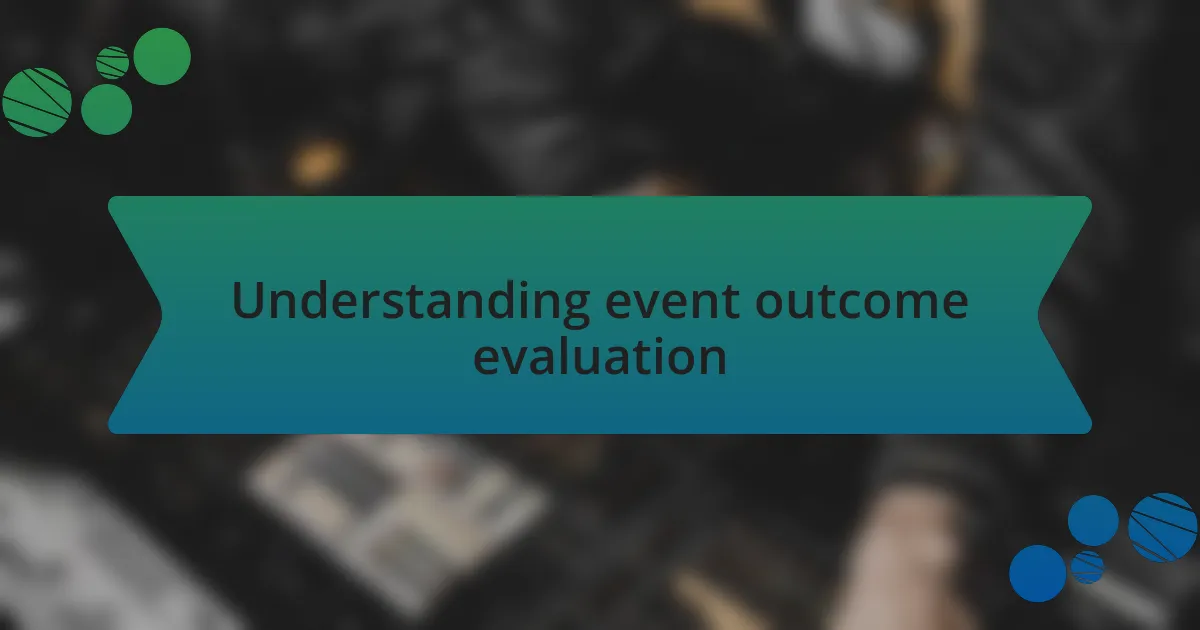
Understanding event outcome evaluation
Evaluating the outcome of an event often feels like piecing together a puzzle. From my experience, it’s not just about attendance numbers or ticket sales; it’s deeply personal. I remember one particular show that didn’t sell out, yet the energy was electric. The crowd connected with the music in a way that left a lasting impression. It made me wonder: how do we measure something as intangible as emotion?
There’s also the after-event feedback, which plays a crucial role. I often find myself waiting with anticipation for those post-event surveys. Reading through attendees’ responses gives me insight into their experiences, and sometimes, the comments leave me surprised. Have you ever felt a response resonate so deeply that it changes your perspective on your own work?
Additionally, social media buzz can be an excellent indicator of success. I recall the excitement that surged when everyone started posting videos from a recent festival. The overwhelming positivity made me realize how community engagement can be a pivotal aspect of event evaluation. What does it mean to you when your audience shares their experiences publicly? For me, it reinforces the profound connection between the artist and the listener.
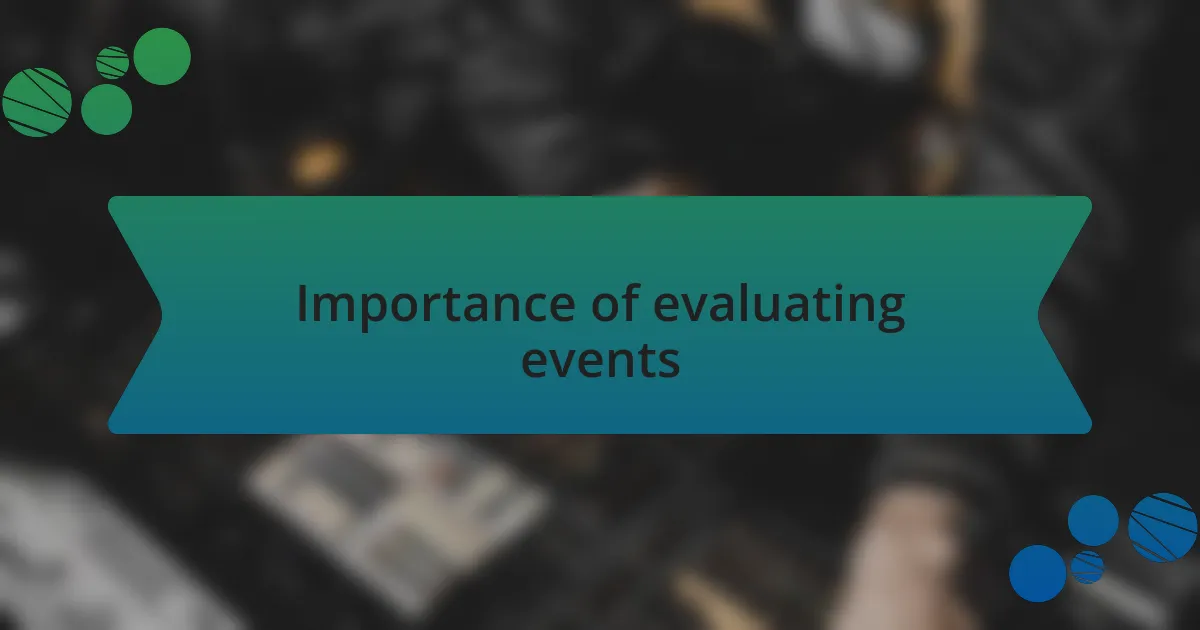
Importance of evaluating events
Evaluating events is essential because it reveals the impact we have on our community. I’ll never forget the first after-party I organized. Even though the numbers were modest, the amount of genuine conversations I witnessed made it clear that we fostered a sense of belonging. Isn’t that what successful events are truly about?
Moreover, the insights gained from evaluation help in refining future events. I recall after an open-air concert, a few attendees noted logistical hiccups that I hadn’t seen. That feedback not only improved our subsequent gatherings but also deepened my understanding of what my audience truly values. Have you ever learned more from feedback than your original expectations? It’s a humbling experience.
Finally, seeing the lasting effects of an event can be profoundly rewarding. At a recent music showcase, one fan told me how discovering a new artist changed her music journey. Moments like these emphasize that evaluating events isn’t just about what went right or wrong; it’s about understanding the journey we take together. How often do we take a step back to appreciate the real connections made through our work?
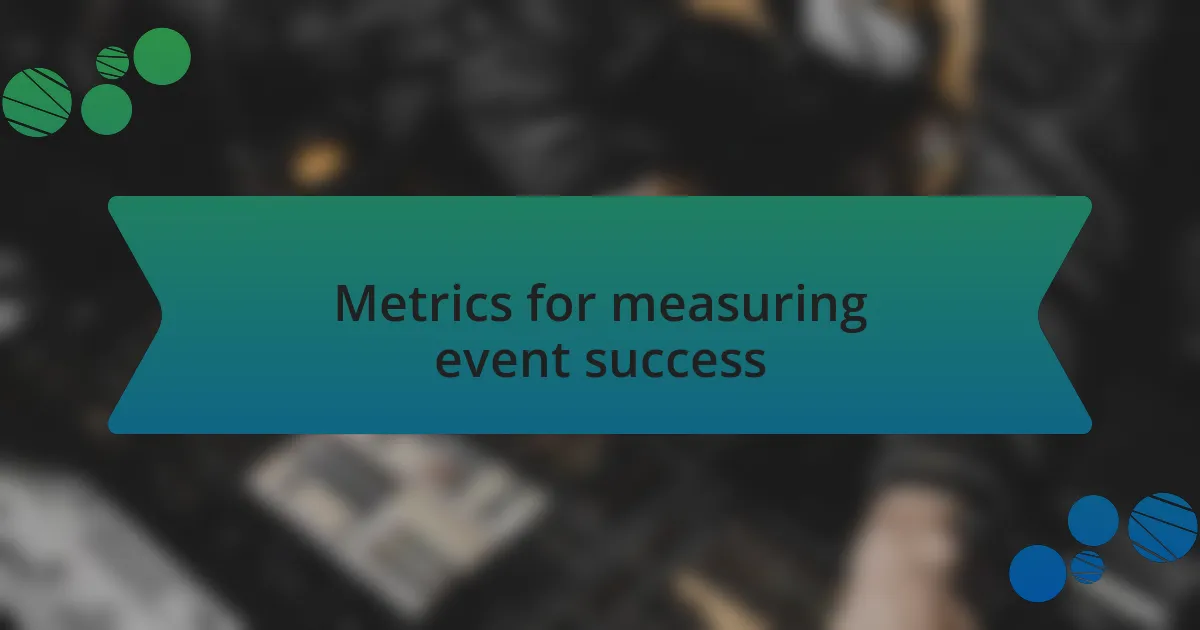
Metrics for measuring event success
When measuring the success of an event, attendance numbers can initially seem like the most straightforward metric. However, I’ve learned that the energy in the room is just as important, if not more so. I vividly remember a DJ set where the crowd was small, but the vibe was electric. How can you quantify that magic?
Another key metric for me is audience engagement, which comes in many forms. Sometimes, the true success lies in the conversations sparked and the connections made. I once noticed a group of strangers bonding over their shared love for a new track that had just dropped. Intangible moments like these often speak volumes about an event’s impact—can you measure the value of new friendships formed over shared beats?
Lastly, analyzing social media buzz can provide insightful data on how an event resonated with the audience. After promoting a festival on various platforms, I was pleasantly surprised to see my feed filled with photos and stories from attendees capturing their excitement. Surely, the reach and resonance of those posts can paint a clearer picture of success than just the hard numbers alone.
![]()
Tools for tracking event performance
Tracking event performance requires effective tools that can give you a comprehensive view of what’s happening both during and after the event. I’ve found that platforms like Eventbrite and Ticketmaster offer insightful analytics on ticket sales and attendee demographics, allowing me to tailor future events to my audience’s preferences. It’s interesting to see how certain demographic trends can shape the vibe I want to create, isn’t it?
Beyond basic attendance metrics, social listening tools like Hootsuite or Brandwatch have transformed how I gauge audience sentiment. After hosting a local showcase, I dove into the social media conversations surrounding the event and was amazed at how attendees expressed their experiences. Analyzing this chatter not only helps me understand what resonated but also fuels my passion for creating even more immersive experiences in the future.
Surveys and feedback forms are also invaluable for gathering qualitative data. I recall sending out a post-event survey after a particularly memorable festival. The responses were enlightening, with attendees sharing their favorite moments and suggestions for improvement. Have you ever considered how much the direct voice of your audience can guide your future planning? In my experience, it’s these firsthand accounts that add depth and direction to my upcoming projects.

Analyzing audience feedback effectively
When it comes to analyzing audience feedback effectively, embracing both qualitative and quantitative insights can be a game changer. I remember a particular event where we implemented a live feedback tool, allowing attendees to share their thoughts in real-time. The immediate responses gave me a heartwarming insight into how people were connecting with the music and atmosphere, and the excitement in the air was palpable.
Additionally, reflecting on anecdotal feedback can really illuminate recurring themes that numbers might overlook. After one of my showcases, I had a heartfelt conversation with a fan who shared how a specific track brought back a cherished memory. This isn’t just data; it’s a powerful reminder that the emotional connections we foster at our events are just as important as the figures and stats we collect.
Lastly, engaging directly with attendees through follow-up conversations has proven invaluable. I often reach out to a select group of fans who actively engage on social media. Their stories and experiences offer a deeper understanding that helps me make informed decisions. Have you ever noticed how a single personal story can change your perspective? I’ve learned that the heart of audience feedback lies in these singular moments that resonate with the larger community.
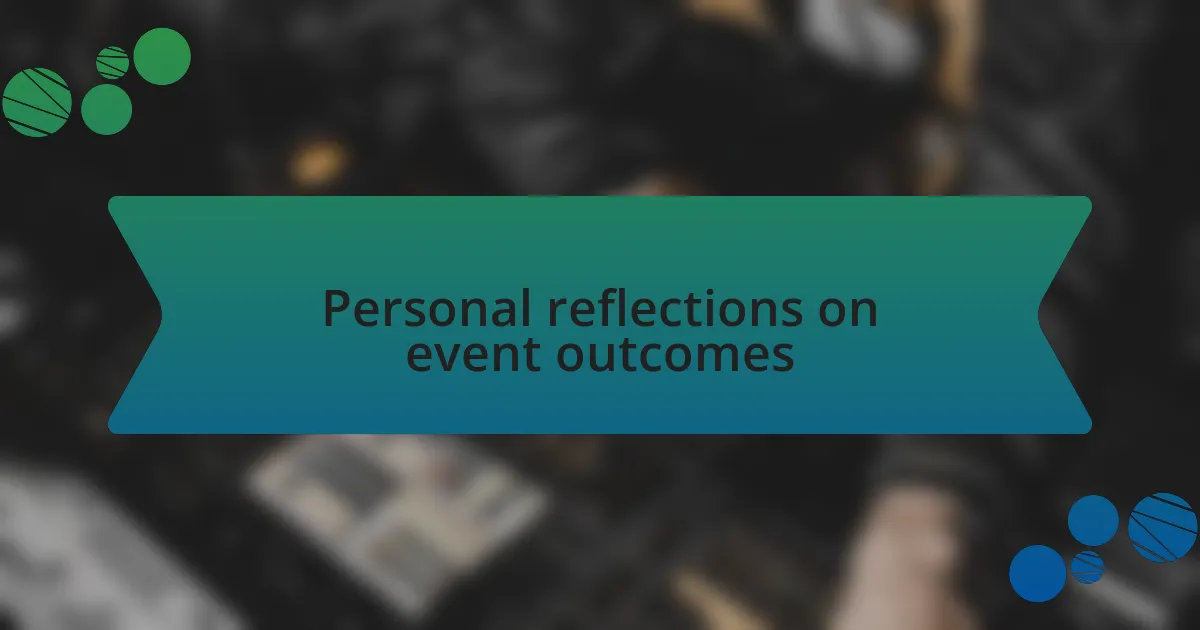
Personal reflections on event outcomes
Reflecting on the outcomes of my events often leads me to consider the moments that stick with me long after the music fades. There was a time when an unexpected storm forced us to move our outdoor event indoors at the last minute. While initially stressful, that shift fostered a unique sense of camaraderie. Attendees crowded together, sharing laughter and stories, creating an intimate vibe that I’ll always cherish. Have you ever experienced something that changed your expectations entirely?
One of the most profound lessons I’ve learned is to never underestimate the impact of small gestures. After a recent show, I decided to spend a few moments with fans at the merchandise table, signing items and chatting. I was surprised by how many people opened up about their lives and how my music had shaped their experiences. Those conversations taught me that for every ticket sold, there’s a deeper connection waiting to be uncovered. It’s a reminder that behind every outcome is a person with their own story.
In my own path, I’ve recognized that not every event will hit the mark, and that’s okay. After one memorable performance, I received mixed feedback – some were enthralled while others felt disconnected. I took that as an opportunity for growth. Instead of getting discouraged, I asked myself what I could learn from the contrasting opinions. How can we turn such moments into stepping stones for future events? Reflecting on these outcomes, I’ve discovered that growth often flourishes in the soil of disappointment and feedback.
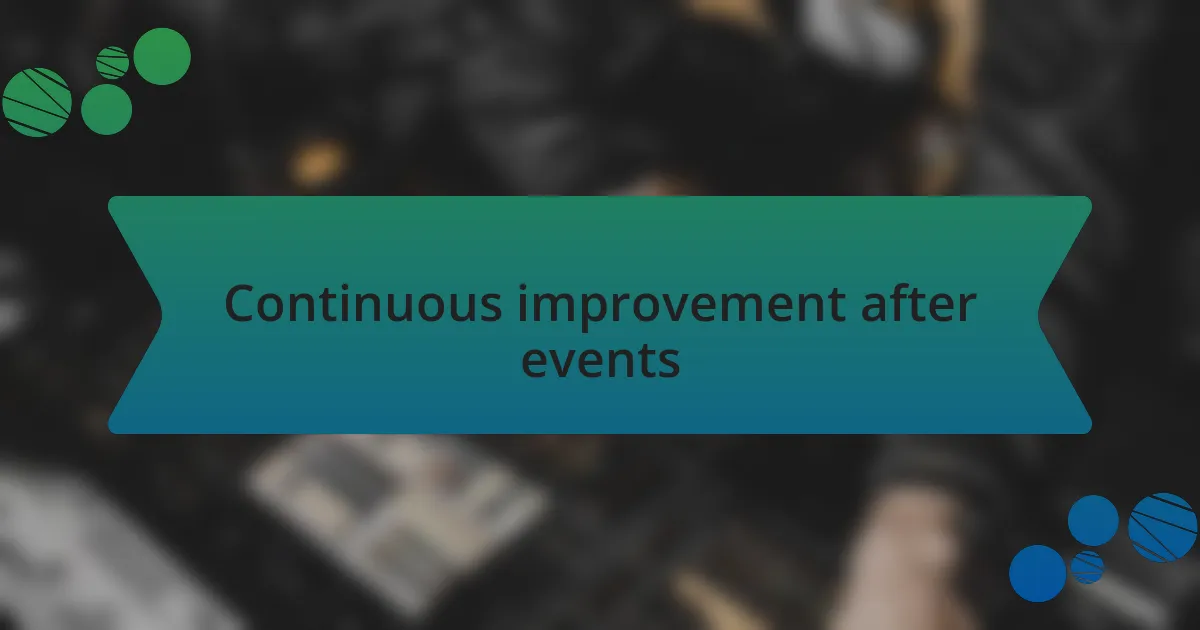
Continuous improvement after events
There’s a quote I often reflect on: “Every experience is a lesson.” After wrapping up an event, I take the time to sift through the feedback, dissecting what resonated with the audience. I vividly remember an after-party where some felt the energy waned too early. Instead of brushing it aside, I found it crucial to analyze why that happened. Was it the lineup? The venue? Those moments of doubt pushed me to reassess my approach, and I’m always eager to evolve.
I’ve also implemented post-event debriefs with my team, which has been a game changer. For instance, after one particularly successful rave, we gathered over coffee to discuss what made it work – the playlist, the sound quality, the vibe. In contrast, another event didn’t generate the same excitement. This was my chance to dig deeper, prompting us to question whether we relied too heavily on trends instead of authenticity. Have you ever looked back and wondered if you truly connected with your audience?
Continuous improvement isn’t just about analyzing numbers or feedback; it’s about fostering a mindset of curiosity. I remember a festival where I was so focused on logistics that I forgot to connect authentically with the crowd during my set. The next time, I made it a priority to engage, and the change in energy was palpable. That’s when I realized that each event provides a fresh canvas to paint my next move; growth springs from these reflections and refinements.